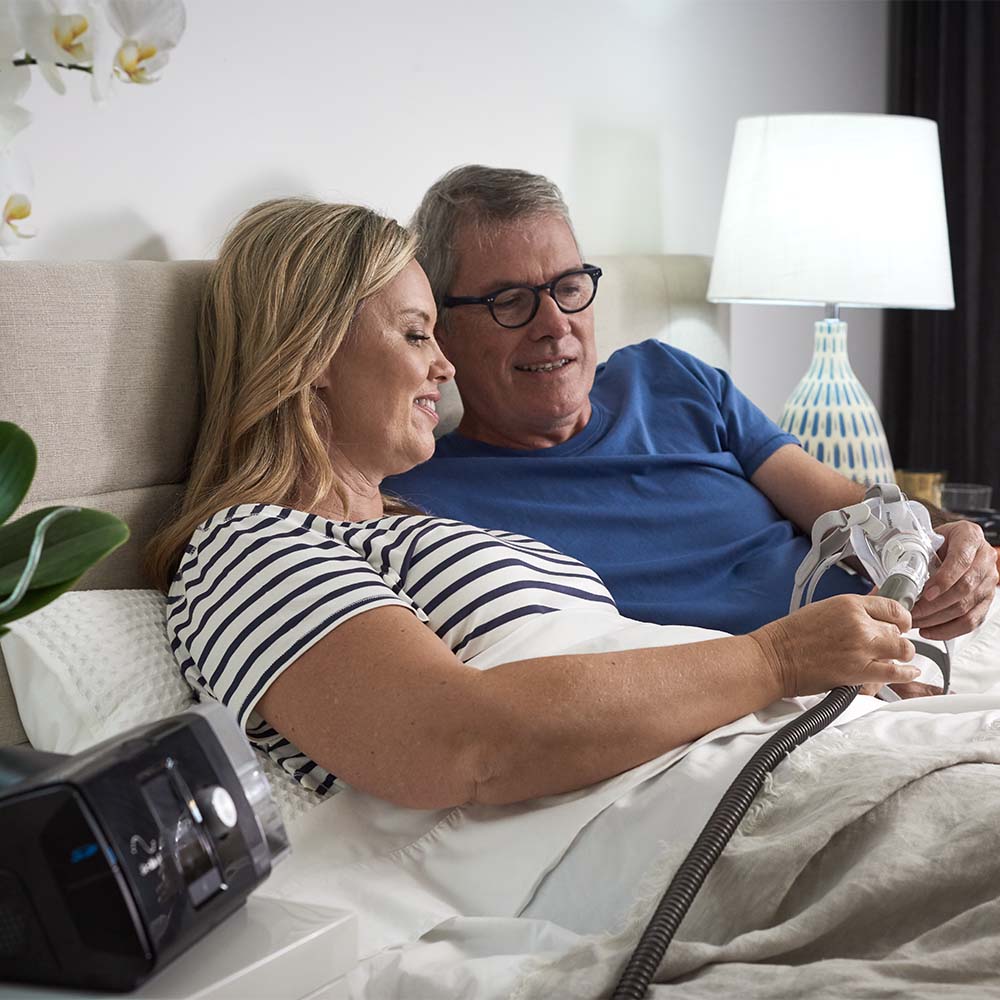- Make sure your CPAP device fits correctly. A correct fit makes a huge difference. Make sure the straps are not too tight or too loose and that the mask seals completely over your nose and mouth. Schedule regular appointments with your doctor to check the fit and evaluate your treatment progress.
- Ease into it. Start by using your CPAP device for short periods during the day. Use the “ramp” setting to gradually increase air pressure. It’s normal to need several months to get used to sleeping this way.
- Upgrade your CPAP device with customized options. Customize the mask, tubing and straps to find the right fit. Ask your doctor about soft pads to reduce skin irritation, nasal pillows for nose discomfort, and chinstraps to keep your mouth closed and reduce throat irritation.
- Use a humidifier to decrease dryness and skin irritation. Try a special face moisturizer for dry skin. Many CPAP devices now come with a built-in humidifier.
- Try a saline nasal spray or a nasal decongestant for nasal congestion.
- Keep your mask, tubing and headgear clean. To ensure maximum comfort and benefit, replace CPAP and humidifier filters regularly and keep the unit clean.
- Mask the sound of the CPAP machine. If the sound of the CPAP machine bothers you, place it beneath the bed to reduce the noise. You can also try using a sound machine or white noise machine to help you sleep.
Research
CPAP tips and troubleshooting
Having trouble with your new sleep apnea device? It can take some time to get accustomed to sleeping while wearing a CPAP device. It’s natural to miss sleeping the “old way,” but there are things you can to do make the adjustment easier.


